A Comprehensive Guide to LTC6601IUF-1#PBF Active Filter Interface
Tube Active Filters Active 20 ROHS3 Compliant QUAD
This article provides a detailed overview of the LTC6601IUF-1#PBF active filter interface by Linear Technology/Analog Devices. It covers the description, features, applications, reference designs, alternative parts, and FAQs related to this product.
Product Introduction
1. Description:
The LTC6601IUF-1#PBF is an active filter interface designed by Linear Technology/Analog Devices. It is a 20-WFQFN exposed pad surface-mount package with a voltage supply range of 2.7V to 5.25V. The filter order is 2nd with a cutoff or center frequency of 28MHz. This product is RoHS3 compliant and suitable for industrial temperature grade applications.
2. Features:
- Single-channel active filter interface
- Low voltage supply range for versatile applications
- Compact 20-WFQFN package with exposed pad for efficient heat dissipation
- 2nd order filter with a 28MHz cutoff frequency
- RoHS3 compliant for environmentally friendly designs
- Industrial temperature grade for reliable performance in harsh environments
3. Applications:
Primary Applications:
- Signal processing in industrial control systems
- Data acquisition systems
- Instrumentation and measurement equipment
Secondary Applications:
- Audio processing and equalization
- Communication systems
- Medical devices
Applicable Specific Modules:
- Industrial automation modules
- Data acquisition modules
- Signal processing modules
4. Reference Designs:
The LTC6601IUF-1#PBF active filter interface is commonly used in the following reference designs:
- Industrial control system signal processing board
- Data acquisition system front-end module
- Instrumentation equipment signal conditioning circuit
5. Alternative Parts:
For users looking for alternative options, the following parts can be considered:
- LTC6601IUF-2#PBF: Similar active filter interface with a different cutoff frequency
- LTC6601IUF-3#PBF: Active filter interface with additional features for specific applications
- LTC6601IUF-4#PBF: High-performance active filter interface for demanding industrial applications
6. FAQs:
Q: What is the voltage supply range of the LTC6601IUF-1#PBF?
A: The LTC6601IUF-1#PBF has a voltage supply range of 2.7V to 5.25V, making it suitable for a wide range of applications.
Q: What is the cutoff frequency of the LTC6601IUF-1#PBF?
A: The LTC6601IUF-1#PBF has a 28MHz cutoff frequency, providing effective signal filtering capabilities.
Q: Is the LTC6601IUF-1#PBF RoHS compliant?
A: Yes, the LTC6601IUF-1#PBF is RoHS3 compliant, ensuring environmentally friendly manufacturing and usage practices.
In conclusion, the LTC6601IUF-1#PBF active filter interface is a versatile and reliable component suitable for various industrial, communication, and instrumentation applications. With its compact design, wide voltage supply range, and high-performance features, it is a popular choice for engineers looking to implement effective signal processing and filtering solutions.
Specifications
- TypeParameter
- Factory Lead Time16 Weeks
- Mounting Type
The "Mounting Type" in electronic components refers to the method used to attach or connect a component to a circuit board or other substrate, such as through-hole, surface-mount, or panel mount.
Surface Mount - Package / Case
refers to the protective housing that encases an electronic component, providing mechanical support, electrical connections, and thermal management.
20-WFQFN Exposed Pad - Surface Mount
having leads that are designed to be soldered on the side of a circuit board that the body of the component is mounted on.
YES - Operating Temperature (Max.)85°C
- Operating Temperature (Min.)-40°C
- Packaging
Semiconductor package is a carrier / shell used to contain and cover one or more semiconductor components or integrated circuits. The material of the shell can be metal, plastic, glass or ceramic.
Tube - Published2008
- JESD-609 Code
The "JESD-609 Code" in electronic components refers to a standardized marking code that indicates the lead-free solder composition and finish of electronic components for compliance with environmental regulations.
e3 - Part Status
Parts can have many statuses as they progress through the configuration, analysis, review, and approval stages.
Active - Moisture Sensitivity Level (MSL)
Moisture Sensitivity Level (MSL) is a standardized rating that indicates the susceptibility of electronic components, particularly semiconductors, to moisture-induced damage during storage and the soldering process, defining the allowable exposure time to ambient conditions before they require special handling or baking to prevent failures
1 (Unlimited) - ECCN Code
An ECCN (Export Control Classification Number) is an alphanumeric code used by the U.S. Bureau of Industry and Security to identify and categorize electronic components and other dual-use items that may require an export license based on their technical characteristics and potential for military use.
EAR99 - Terminal Finish
Terminal Finish refers to the surface treatment applied to the terminals or leads of electronic components to enhance their performance and longevity. It can improve solderability, corrosion resistance, and overall reliability of the connection in electronic assemblies. Common finishes include nickel, gold, and tin, each possessing distinct properties suitable for various applications. The choice of terminal finish can significantly impact the durability and effectiveness of electronic devices.
Matte Tin (Sn) - Voltage - Supply
Voltage - Supply refers to the range of voltage levels that an electronic component or circuit is designed to operate with. It indicates the minimum and maximum supply voltage that can be applied for the device to function properly. Providing supply voltages outside this range can lead to malfunction, damage, or reduced performance. This parameter is critical for ensuring compatibility between different components in a circuit.
2.7V~5.25V - Terminal Position
In electronic components, the term "Terminal Position" refers to the physical location of the connection points on the component where external electrical connections can be made. These connection points, known as terminals, are typically used to attach wires, leads, or other components to the main body of the electronic component. The terminal position is important for ensuring proper connectivity and functionality of the component within a circuit. It is often specified in technical datasheets or component specifications to help designers and engineers understand how to properly integrate the component into their circuit designs.
QUAD - Terminal Form
Occurring at or forming the end of a series, succession, or the like; closing; concluding.
NO LEAD - Peak Reflow Temperature (Cel)
Peak Reflow Temperature (Cel) is a parameter that specifies the maximum temperature at which an electronic component can be exposed during the reflow soldering process. Reflow soldering is a common method used to attach electronic components to a circuit board. The Peak Reflow Temperature is crucial because it ensures that the component is not damaged or degraded during the soldering process. Exceeding the specified Peak Reflow Temperature can lead to issues such as component failure, reduced performance, or even permanent damage to the component. It is important for manufacturers and assemblers to adhere to the recommended Peak Reflow Temperature to ensure the reliability and functionality of the electronic components.
260 - Number of Functions1
- Supply Voltage
Supply voltage refers to the electrical potential difference provided to an electronic component or circuit. It is crucial for the proper operation of devices, as it powers their functions and determines performance characteristics. The supply voltage must be within specified limits to ensure reliability and prevent damage to components. Different electronic devices have specific supply voltage requirements, which can vary widely depending on their design and intended application.
3V - Terminal Pitch
The center distance from one pole to the next.
0.5mm - Time@Peak Reflow Temperature-Max (s)
Time@Peak Reflow Temperature-Max (s) refers to the maximum duration that an electronic component can be exposed to the peak reflow temperature during the soldering process, which is crucial for ensuring reliable solder joint formation without damaging the component.
NOT SPECIFIED - Base Part Number
The "Base Part Number" (BPN) in electronic components serves a similar purpose to the "Base Product Number." It refers to the primary identifier for a component that captures the essential characteristics shared by a group of similar components. The BPN provides a fundamental way to reference a family or series of components without specifying all the variations and specific details.
LTC6601 - Pin Count
a count of all of the component leads (or pins)
20 - JESD-30 Code
JESD-30 Code refers to a standardized descriptive designation system established by JEDEC for semiconductor-device packages. This system provides a systematic method for generating designators that convey essential information about the package's physical characteristics, such as size and shape, which aids in component identification and selection. By using JESD-30 codes, manufacturers and engineers can ensure consistency and clarity in the specification of semiconductor packages across various applications and industries.
S-PQCC-N20 - Qualification Status
An indicator of formal certification of qualifications.
Not Qualified - Supply Voltage-Max (Vsup)
The parameter "Supply Voltage-Max (Vsup)" in electronic components refers to the maximum voltage that can be safely applied to the component without causing damage. It is an important specification to consider when designing or using electronic circuits to ensure the component operates within its safe operating limits. Exceeding the maximum supply voltage can lead to overheating, component failure, or even permanent damage. It is crucial to adhere to the specified maximum supply voltage to ensure the reliable and safe operation of the electronic component.
5.25V - Temperature Grade
Temperature grades represent a tire's resistance to heat and its ability to dissipate heat when tested under controlled laboratory test conditions.
INDUSTRIAL - Supply Voltage-Min (Vsup)
The parameter "Supply Voltage-Min (Vsup)" in electronic components refers to the minimum voltage level required for the component to operate within its specified performance range. This parameter indicates the lowest voltage that can be safely applied to the component without risking damage or malfunction. It is crucial to ensure that the supply voltage provided to the component meets or exceeds this minimum value to ensure proper functionality and reliability. Failure to adhere to the specified minimum supply voltage may result in erratic behavior, reduced performance, or even permanent damage to the component.
2.7V - Number of Channels1
- Analog IC - Other Type
Analog IC - Other Type is a parameter used to categorize electronic components that are integrated circuits (ICs) designed for analog signal processing but do not fall into more specific subcategories such as amplifiers, comparators, or voltage regulators. These ICs may include specialized analog functions such as analog-to-digital converters (ADCs), digital-to-analog converters (DACs), voltage references, or signal conditioning circuits. They are typically used in various applications where precise analog signal processing is required, such as in audio equipment, instrumentation, communication systems, and industrial control systems. Manufacturers provide detailed specifications for these components to help engineers select the most suitable IC for their specific design requirements.
ANALOG CIRCUIT - Filter Order
The order of a filter also indicates the minimum number of reactive components that the filter will require. For example, a third-order filter requires at least three reactive components one capacitor and two inductors, two capacitors and one inductor, or in the case of an active filter, three capacitors.
2nd - Frequency - Cutoff or Center
Frequency - Cutoff or Center refers to a specific point in a frequency response where the output signal is reduced to a certain level compared to the input signal. In filters, the cutoff frequency marks the boundary between passband and stopband, indicating the frequency at which the power of the output drops to half its maximum value, usually corresponding to a -3 dB point. In resonant circuits, the center frequency represents the frequency at which the circuit naturally oscillates, often leading to maximum gain or response. This parameter is crucial for determining how electronic components like filters, amplifiers, and oscillators behave within a given range of frequencies.
28Mhz - Number of Filters3
- Length4mm
- Height Seated (Max)
Height Seated (Max) is a parameter in electronic components that refers to the maximum allowable height of the component when it is properly seated or installed on a circuit board or within an enclosure. This specification is crucial for ensuring proper fit and alignment within the overall system design. Exceeding the maximum seated height can lead to mechanical interference, electrical shorts, or other issues that may impact the performance and reliability of the electronic device. Manufacturers provide this information to help designers and engineers select components that will fit within the designated space and function correctly in the intended application.
0.8mm - Width4mm
- RoHS Status
RoHS means “Restriction of Certain Hazardous Substances” in the “Hazardous Substances Directive” in electrical and electronic equipment.
ROHS3 Compliant
Parts with Similar Specs
Datasheet PDF
- Datasheets :
 L7805ACV Voltage Regulator: Pinout, Applications and Datasheet
L7805ACV Voltage Regulator: Pinout, Applications and Datasheet21 November 20231060
 78L05 Voltage Regulator: Circuit, Equivalent, and 78L05 vs 7805
78L05 Voltage Regulator: Circuit, Equivalent, and 78L05 vs 780524 August 202129157
 BC639 Transistor: How to Use it?
BC639 Transistor: How to Use it?12 April 20227289
 KSZ8081RNA Transceiver: Pinout, Equivalent and Datasheet
KSZ8081RNA Transceiver: Pinout, Equivalent and Datasheet10 February 20221984
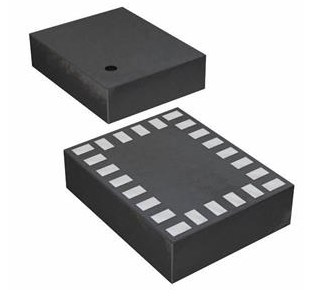 LSM9DS1TR Acceleration Sensor: Pinout, Datasheet, and Application Circuit
LSM9DS1TR Acceleration Sensor: Pinout, Datasheet, and Application Circuit12 July 20211084
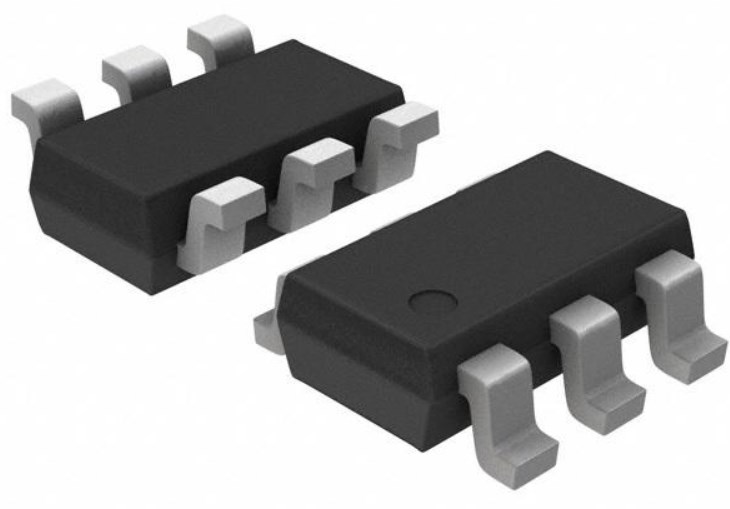 TPS3700DDCR: Pinout, Datasheet
TPS3700DDCR: Pinout, Datasheet14 March 2022881
 How to use ATTINY85 Microcontroller?
How to use ATTINY85 Microcontroller?08 April 20222780
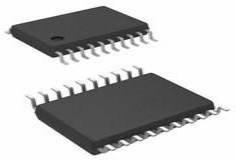 8533AG-01 LVPECL Fanout Buffer: Pinout, Features and Datasheet
8533AG-01 LVPECL Fanout Buffer: Pinout, Features and Datasheet28 March 2022260
 Introduction To Different Types Of Relays
Introduction To Different Types Of Relays10 November 202010770
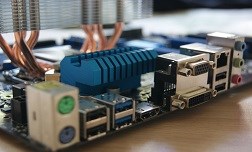 -5V, -3V, How is the Negative Voltage Generated? Attached Circuit Analysis and Scheme
-5V, -3V, How is the Negative Voltage Generated? Attached Circuit Analysis and Scheme13 September 20227577
 Towards an Optoelectronic Chip That Mimics the Human Brain
Towards an Optoelectronic Chip That Mimics the Human Brain20 April 2022771
 India's Bold Leap Towards Semiconductor Supremacy
India's Bold Leap Towards Semiconductor Supremacy15 September 20232257
 Semiconductor Industry's Uphill Battle Towards Net Zero
Semiconductor Industry's Uphill Battle Towards Net Zero22 September 2023620
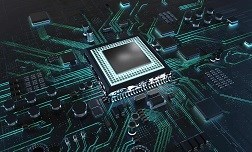 The Introduction to PCB Inspection Knowledge and Methods
The Introduction to PCB Inspection Knowledge and Methods22 December 20212835
 Voltage Supervisor ICs: Solutions for IoT, Automotive, and Industrial Applications
Voltage Supervisor ICs: Solutions for IoT, Automotive, and Industrial Applications04 June 2025461
 Elon Musk: The Neuralink Brain Chip Developed By Its Company Could Help Treat Morbid Obesity
Elon Musk: The Neuralink Brain Chip Developed By Its Company Could Help Treat Morbid Obesity24 April 20221883
Linear Technology/Analog Devices
In Stock
United States
China
Canada
Japan
Russia
Germany
United Kingdom
Singapore
Italy
Hong Kong(China)
Taiwan(China)
France
Korea
Mexico
Netherlands
Malaysia
Austria
Spain
Switzerland
Poland
Thailand
Vietnam
India
United Arab Emirates
Afghanistan
Åland Islands
Albania
Algeria
American Samoa
Andorra
Angola
Anguilla
Antigua & Barbuda
Argentina
Armenia
Aruba
Australia
Azerbaijan
Bahamas
Bahrain
Bangladesh
Barbados
Belarus
Belgium
Belize
Benin
Bermuda
Bhutan
Bolivia
Bonaire, Sint Eustatius and Saba
Bosnia & Herzegovina
Botswana
Brazil
British Indian Ocean Territory
British Virgin Islands
Brunei
Bulgaria
Burkina Faso
Burundi
Cabo Verde
Cambodia
Cameroon
Cayman Islands
Central African Republic
Chad
Chile
Christmas Island
Cocos (Keeling) Islands
Colombia
Comoros
Congo
Congo (DRC)
Cook Islands
Costa Rica
Côte d’Ivoire
Croatia
Cuba
Curaçao
Cyprus
Czechia
Denmark
Djibouti
Dominica
Dominican Republic
Ecuador
Egypt
El Salvador
Equatorial Guinea
Eritrea
Estonia
Eswatini
Ethiopia
Falkland Islands
Faroe Islands
Fiji
Finland
French Guiana
French Polynesia
Gabon
Gambia
Georgia
Ghana
Gibraltar
Greece
Greenland
Grenada
Guadeloupe
Guam
Guatemala
Guernsey
Guinea
Guinea-Bissau
Guyana
Haiti
Honduras
Hungary
Iceland
Indonesia
Iran
Iraq
Ireland
Isle of Man
Israel
Jamaica
Jersey
Jordan
Kazakhstan
Kenya
Kiribati
Kosovo
Kuwait
Kyrgyzstan
Laos
Latvia
Lebanon
Lesotho
Liberia
Libya
Liechtenstein
Lithuania
Luxembourg
Macao(China)
Madagascar
Malawi
Maldives
Mali
Malta
Marshall Islands
Martinique
Mauritania
Mauritius
Mayotte
Micronesia
Moldova
Monaco
Mongolia
Montenegro
Montserrat
Morocco
Mozambique
Myanmar
Namibia
Nauru
Nepal
New Caledonia
New Zealand
Nicaragua
Niger
Nigeria
Niue
Norfolk Island
North Korea
North Macedonia
Northern Mariana Islands
Norway
Oman
Pakistan
Palau
Palestinian Authority
Panama
Papua New Guinea
Paraguay
Peru
Philippines
Pitcairn Islands
Portugal
Puerto Rico
Qatar
Réunion
Romania
Rwanda
Samoa
San Marino
São Tomé & Príncipe
Saudi Arabia
Senegal
Serbia
Seychelles
Sierra Leone
Sint Maarten
Slovakia
Slovenia
Solomon Islands
Somalia
South Africa
South Sudan
Sri Lanka
St Helena, Ascension, Tristan da Cunha
St. Barthélemy
St. Kitts & Nevis
St. Lucia
St. Martin
St. Pierre & Miquelon
St. Vincent & Grenadines
Sudan
Suriname
Svalbard & Jan Mayen
Sweden
Syria
Tajikistan
Tanzania
Timor-Leste
Togo
Tokelau
Tonga
Trinidad & Tobago
Tunisia
Turkey
Turkmenistan
Turks & Caicos Islands
Tuvalu
U.S. Outlying Islands
U.S. Virgin Islands
Uganda
Ukraine
Uruguay
Uzbekistan
Vanuatu
Vatican City
Venezuela
Wallis & Futuna
Yemen
Zambia
Zimbabwe


















